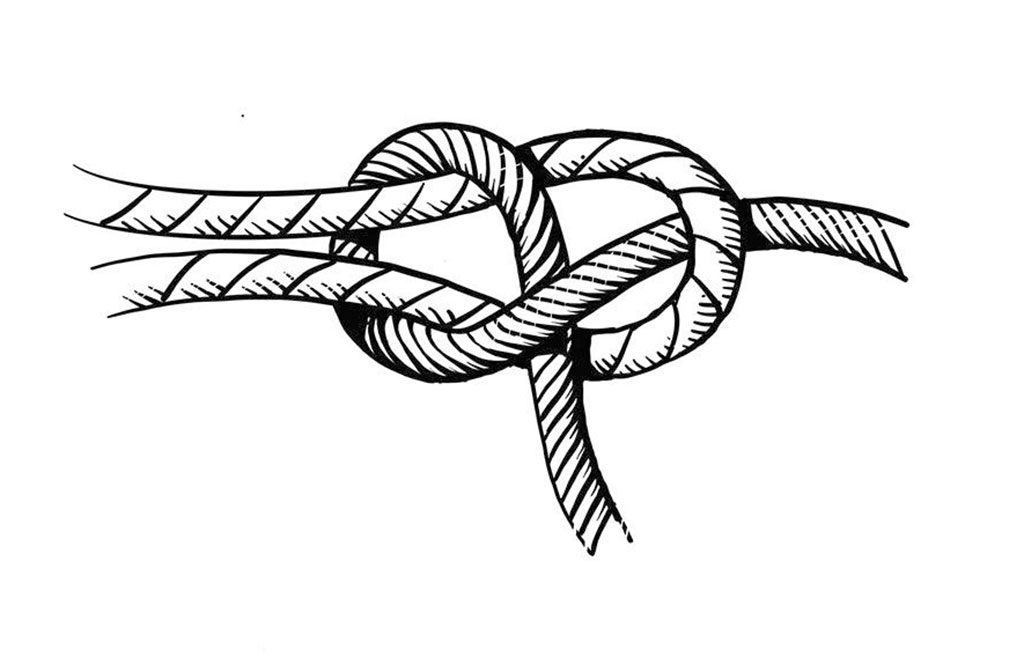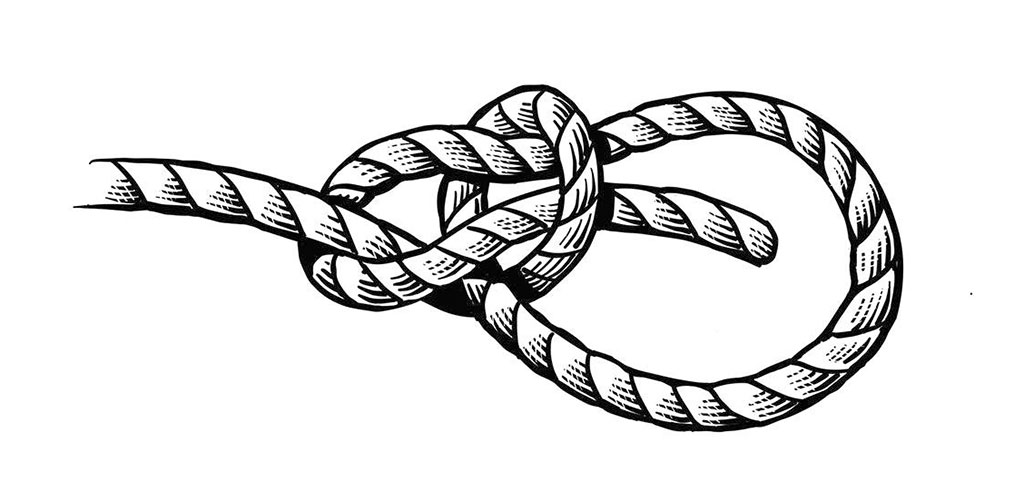How to tie the only knots you'll ever need
The 'Surrey Six' is a collection of ways to tie rope that, for most people, are the only six knots you'll ever need. Agnes Stamp tries her hand at tying them, and looks in to the lore of knot tying.


Founded in 1982, the International Guild of Knot Tyers (IGKT), is an association that draws together keen kompologists worldwide and aims to preserve traditional knot-tying techniques. The ‘six-knot challenge’ (also known as the ‘Surrey Six’, because it was originally developed by the Surrey branch of the IGKT) invites contenders to tie six elementary knots — sheet bend, reef knot, round turn and two half hitches, bowline, sheepshank and clove hitch — in record time.
The fastest recorded time for tying the six on individual ropes is 8.1 seconds (yes, for all six) which was set in 1977 by an American named Clinton R. Bailey. Don't fret if you can't match that speed: anything under 20 seconds is ‘good’, advises Chris Jenkins, honorary secretary of the IGKT Solent branch.
Sheet bend

Widely used by sailors for uniting two lengths of rope of dissimilar size and construction, the sheet bend was originally used in running rigging to trim sails. Sometimes referred to as a weaver’s knot, it can also be used to make fishing nets and hammocks.
Bowline

The main purpose of the bowline is to create a fixed loop at the end of a rope and it is often used for securing the bow of a boat to the dock. Referred to by Sir Alan Herbert as the ‘king of knots’ in his poem The Bowline, this knot is also handy for tent guy lines, creating an anchor around a tree or in a rescue situation. And though it looks complicated, tying it is deceptively easy thanks to the rhyme we learned at Cubs, Brownies, Guides or Scouts: the rabbit comes out of the hole, goes round the tree, and back down the hole again!
Reef knot
A good all-purpose knot, the reef knot (in its slipped form) is the usual bow used to tie shoelaces. A simple, ancient binding method, it’s also useful for tying bundles, supporting an injured arm in a sling and, of course, tying down part of a sail (reefing).

https://youtu.be/a3RHRfKPpog?si=5y6fBRPfyLrLMIH9&t=15
Round turn and two half hitches

Used to secure the end of a rope to a fixed point, the round turn and two half hitches was traditionally used for holding mooring lines. Easy to tie and strong on the job, this knot is handy for hanging hammocks in trees and can be easily modified into a quick-release knot.
Exquisite houses, the beauty of Nature, and how to get the most from your life, straight to your inbox.
https://youtu.be/2Ssa22v4fxE?si=JUM7g7pmEgi5D6WX&t=5
Sheepshank

A simple knot useful for temporarily shortening a rope without severing it. It can also be used to bypass a section of damaged rope. Be warned, the sheepshank is an unstable knot — especially if tied in synthetic, slippery rope — and will only hold when there is tension on the rope.
https://youtu.be/j_hmKwfafi8?si=rMCk8Qp98D80ShPA&t=12
Clove hitch

An ancient knot, this is a quick and easy way to secure a line to a pole, and is often seen securing fenders to the side of a boat. Frequently used in mountaineering, it is also a versatile decorative knot, especially in macramé.
https://youtu.be/Gs9WyrzNjJs?si=6L4Qlsi6A8drU2ho&t=10
Once the ‘Surrey six’ have been mastered, why not try the figure-of-eight knot (‘a good all-purpose stopper knot’) or the constrictor knot — one of the most effective binding knots — although, as Chris Jenkins of the International Guild of Knot Tyers advises, ‘the downside is that you may have to cut it to remove it!’

https://youtu.be/r2XqvsnWiu8?si=a2hoatvZ6w12cwNl&t=46

Simon Jenkins: Britain’s historic houses are, for the most part, safe — that is not true of the countryside
The National Trust is tying itself in knots, argues its former chairman Simon Jenkins, while missing real challenge of the
Agnes has worked for Country Life in various guises — across print, digital and specialist editorial projects — before finally finding her spiritual home on the Features Desk. A graduate of Central St. Martins College of Art & Design she has worked on luxury titles including GQ and Wallpaper* and has written for Condé Nast Contract Publishing, Horse & Hound, Esquire and The Independent on Sunday. She is currently writing a book about dogs, due to be published by Rizzoli New York in September 2025.

